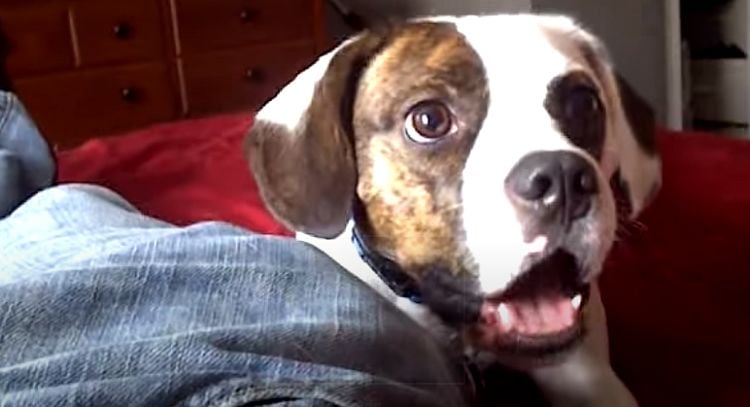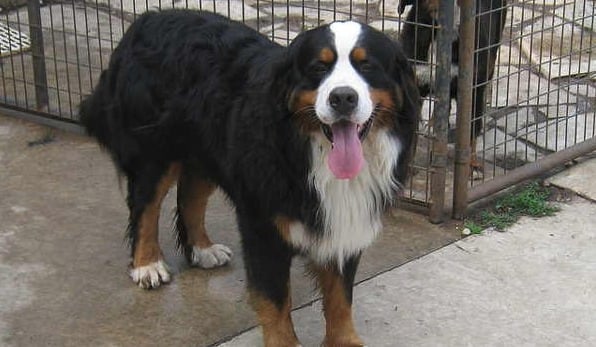These 13 Dogs Require More Hair Appointments Than You Do
Some dogs aren’t just pets—they’re walking fashion statements with fur-care needs that rival Hollywood celebrities. With silky coats, thick curls, or flowing manes, these glamorous pups don’t just roll out of bed looking fabulous. They require time, attention, and often a dedicated groomer on speed dial. While a quick brush here and there might cut it for your average mutt, these breeds need deep conditioning, blowouts, trims, and styling to stay healthy and mat-free.
It’s not just about vanity either. For many of these dogs, grooming is a health essential. Mats can cause skin infections, heavy coats can lead to overheating, and neglected nails or ears can spell trouble. Maintaining their look often means weekly—or even daily—brushing, routine baths, and scheduled salon visits that might leave you wondering if they’ve got a better beauty regimen than you do.
Whether you’re thinking of adding one of these fluffballs to your family or you’re just curious about the dogs that live the high-maintenance lifestyle, this list highlights 13 breeds that demand serious grooming commitment. Be warned: these pups are adorable, but they’re not low-effort. If you’ve ever skipped a haircut or delayed a spa day, just wait until you meet the four-legged divas that expect nothing less than full glam.
1. Poodle Perfectionists
Sporting those iconic pompoms isn’t just for show – Poodles actually need consistent grooming every 4-6 weeks to maintain their curly, non-shedding coats. Without regular trims, their hair continuously grows and becomes painfully matted.
Professional groomers often spend hours on a single Poodle, meticulously scissoring to achieve those rounded puffs and clean lines. The sophisticated Standard, pocket-sized Miniature, or tiny Toy all share the same demanding coat genetics.
Many Poodle owners learn basic maintenance trims for between appointments, but most still rely on professionals for the full sculptured look that makes this breed instantly recognizable.
2. Afghan Hound Aristocrats
Flowing locks worthy of a shampoo commercial make Afghan Hounds the supermodels of the dog world. Their silky, fine hair requires daily brushing sessions lasting up to an hour to prevent painful tangles.
Monthly professional grooming appointments are essential, with specialized treatments to maintain the coat’s lustrous sheen. Many owners equip their homes with special tables just for grooming sessions.
The breed’s ancient origins as desert hunters didn’t prepare them for life as glamour dogs, but their regal appearance comes with a royal maintenance schedule. Some dedicated owners even wrap sections of coat in protective paper to preserve the hair’s condition for dog shows.
3. Shih Tzu Stylistas
Behind that adorable face hides a grooming schedule that would exhaust most humans. Shih Tzus require daily brushing to prevent their double coat from becoming a matted mess, with many owners opting for daily eye cleaning too.
Professional grooming every 4-6 weeks keeps them looking their best, with many sporting the famous topknot tied with a bow. Their name means “little lion” in Chinese, but there’s nothing fierce about the hours they spend being pampered.
Bred specifically as companion dogs for Chinese royalty, their high-maintenance appearance is actually by design – they were created to be living ornaments for imperial palaces, a role they still embrace today.
4. Bichon Frise Fluffballs
Cotton-ball clouds with legs, Bichon Frises require professional grooming every 4 weeks to maintain their signature powder-puff appearance. Their dense, curly white coat needs daily brushing to prevent mats that can form surprisingly quickly.
Professional groomers use specialized techniques to create that rounded, fluffy silhouette that makes Bichons so recognizable. The breed’s cheerful personality makes them patient during grooming sessions, though the process can take several hours.
Originally bred as sailing companions for Spanish sailors, Bichons eventually found their way into Renaissance paintings and royal courts, where their pristine white coats became status symbols – a tradition of high maintenance that continues today.
5. Portuguese Water Dog Waves
Presidential seal of approval aside (the Obamas had two!), Portuguese Water Dogs demand serious grooming commitment. Their waterproof, non-shedding coat requires brushing several times weekly and professional grooming every 6-8 weeks.
Owners can choose between the lion cut (clipped hindquarters, full mane) or the retriever cut (uniform one-inch length), both requiring skilled hands to execute properly. These working dogs were bred to assist fishermen, with their waterproof coats protecting them during long swims in the Atlantic.
Without regular maintenance, their curly or wavy coat forms tight, painful mats that can require complete shaving to remove – a grooming emergency no owner wants to face.
6. Old English Sheepdog Moptops
Remember the shaggy dog from The Little Mermaid? That’s an Old English Sheepdog, and yes, they really do need that much grooming. Their massive double coat requires daily brushing sessions lasting 1-2 hours to prevent severe matting.
Professional grooming every 6 weeks is essential, with many owners opting for a modified cut to reduce maintenance. A full-coated show dog can take 4+ hours to groom professionally, with specialized high-velocity dryers needed to reach their dense undercoat.
Originally bred for driving cattle to market, their thick coat protected them from harsh British weather. Today, many pet owners keep them in a “puppy cut” year-round to reduce the grooming marathon while preserving their lovable teddy bear appearance.
7. Lhasa Apso Royalty
Developed as indoor sentinel dogs for Tibetan monasteries and palaces, Lhasa Apsos have hair that can grow to floor length without trimming. Their straight, dense coat requires brushing every other day and professional grooming every 4-6 weeks.
Many owners opt for the practical “puppy cut” for easier maintenance, though traditionalists maintain the flowing floor-length coat. The breed’s name gives a clue to their high status – “Lhasa” is Tibet’s capital, while “Apso” means bearded or long-haired.
Their coat served as natural insulation against Tibet’s harsh mountain climate, but today it’s more likely to be adorned with bows and maintained with premium conditioning treatments. These little dogs have gone from guarding monasteries to being pampered salon regulars.
8. Maltese Silk Specialists
Maltese dogs sport a single coat of hair (not fur) that grows continuously like human hair. Daily brushing is non-negotiable to prevent their silky white strands from tangling into painful mats.
Professional grooming every 4-6 weeks keeps them looking their best, with many sporting face-framing topknots secured with tiny bands or clips. The contrast of their pure white coat against black button eyes and nose creates that distinctive Maltese look that’s been admired for over 2,000 years.
Ancient Romans believed Maltese had healing powers, with nobles keeping them as status symbols. Their coat’s luxurious texture requires special shampoos and conditioners to maintain its characteristic silkiness – no wonder they’ve been pampered companions since antiquity!
9. Komondor Cord Collectors
Looking like animated mops, Komondors have perhaps the most unusual coat in the dog world. Their distinctive white cords (which resemble dreadlocks) form naturally as the puppy coat intertwines with the adult coat around 8-10 months of age.
Once corded, these Hungarian sheepdogs can’t be brushed – instead, cords must be manually separated all the way to the skin every few weeks to prevent matting. Bathing is a major production, with drying taking up to three days even with fans.
The cords served as protection against wolf bites and extreme weather while guarding flocks. Today’s owners commit to a lifetime of specialized maintenance, with some cords eventually reaching the ground on mature dogs.
10. Cocker Spaniel Curtains
Those flowing ears and feathered legs don’t stay gorgeous without help! Cocker Spaniels need brushing every other day and professional grooming every 4-8 weeks to maintain their signature look.
Their silky ears require special attention, needing cleaning and trimming to prevent infections and food soiling. American Cockers typically have more profuse coats than their English cousins, though both varieties demand regular maintenance.
Originally bred as hunting dogs, their coat protected them from thorny underbrush. Today they’re more likely to be show dogs or companions, with many owners learning to do maintenance trims between professional appointments. Their sweet expression peeking out from under that characteristic fringe makes all the grooming effort worthwhile.
11. Yorkshire Terrier Trendsetters
Don’t let their tiny size fool you – Yorkies have major grooming needs. Their fine, silky hair grows continuously and is prone to tangling, requiring daily brushing sessions to prevent mats.
Show dogs sport floor-length coats parted down the middle from head to tail, requiring protective wrapping between shows. Most pet Yorkies wear a more practical “puppy cut” that still needs professional maintenance every 4-6 weeks.
Yorkshire Terriers were originally working-class dogs who caught rats in textile mills, but their luxurious coats helped them transition to companion status. Their hair is actually similar to human hair in texture, which explains why many owners use human-grade hair products on their diminutive divas.
12. Briard Bushy Beauties
With a shaggy double coat that can reach 6 inches in length, Briards embody the phrase “high maintenance.” These French herding dogs need 2-3 hours of brushing weekly plus professional grooming every 6-8 weeks to prevent their coat from becoming one giant mat.
Their distinctive bearded face requires regular cleaning after meals, while their eyebrows (called “peak”) need trimming to maintain visibility. Napoleon supposedly owned Briards, appreciating both their herding abilities and distinctive appearance.
The breed’s coat served a practical purpose in their native France, protecting them from harsh weather and potential predator attacks while guarding sheep. Today, maintaining that historic coat is a labor of love that keeps groomers in business.
13. Bearded Collie Mane Managers
Beneath all that hair lies a working dog with serious grooming requirements. Bearded Collies need thorough brushing sessions 2-3 times weekly, working down to the skin through their double coat to prevent painful matting.
Professional grooming every 8 weeks helps maintain the coat’s condition and manage its continual growth. Their name comes from the “beard” of long hair under the chin, though the entire dog is covered in a shaggy, weather-resistant coat.
Originally Scottish herding dogs, their coat protected them from harsh Highland conditions. Modern “Beardie” owners often become amateur groomers by necessity, investing in special tables, high-velocity dryers, and professional-grade tools to manage their dog’s magnificent manes between professional appointments.



















